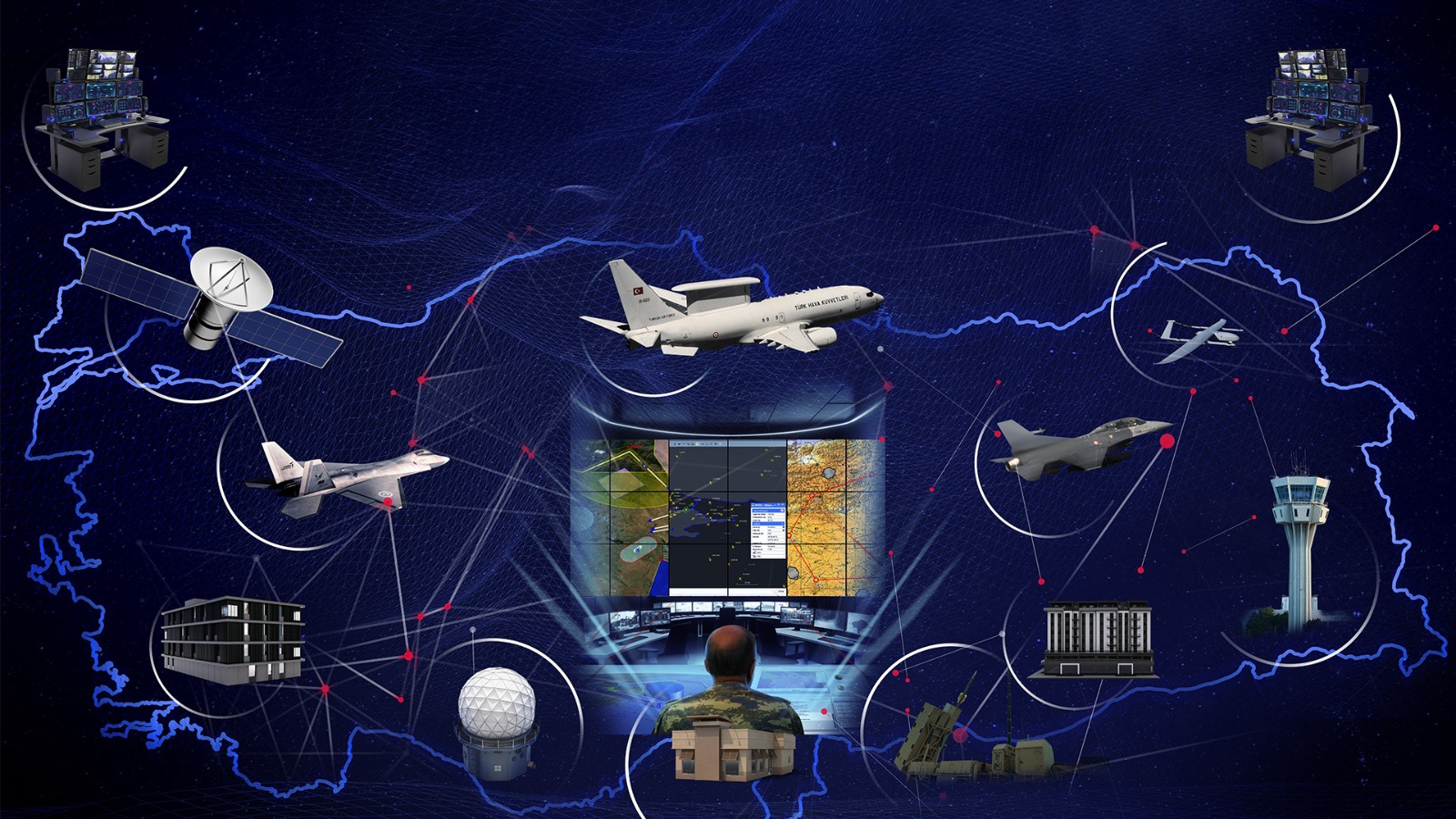Table of Contents
ToggleWhy Air Forces Need Integrated Information Systems
Modern warfare is no longer confined to frontlines and conventional battlefield confrontations. As threats evolve into hybrid forms, time and information have become as critical as firepower. For air forces—highly responsive, technically complex, and multifaceted units—information is the most powerful yet invisible ammunition on the battlefield.
Asymmetric threats and complex operational dynamics demand simultaneous, coordinated action across multiple units. This can only be achieved through a centralized, integrated, live and updated information system. For a fighter pilot to take off, it’s not just about the aircraft. Everything—maintenance status, fuel, weather, route, munitions, and personnel readiness—must align perfectly. Disconnected systems or manual processes simply cannot manage this complexity.
This is where digitalization becomes more than a technological investment—it becomes a strategic necessity for national defense.
The Two Pillars of AICCS: BMS and RMS
To meet this critical need, HAVELSAN, a pioneer in Turkish defense technologies, developed AICCS (Air Force Integrated Command and Control System)—a fully integrated information platform that unifies all operational and management processes of the Air Force under a single digital roof.
AICCS stands on two key subsystems: the Battle Management System (BMS), focused on operational command, and the Resource Management System (RMS), which handles support functions.
The BMS is actively involved in the planning, execution, and evaluation of strategic, operational, and tactical missions. From flight planning to airspace control, it provides a wide spectrum of command and control capabilities.
The RMS manages essential backbone functions such as human resources, logistics, finance, and maintenance. It handles processes from payroll for thousands of personnels to the upkeep of hundreds of aircraft, from the management of over a million parts to flight readiness operations. The system enables simultaneous coordination across 80 geographically separated units and over 35,000 users.
Together, these systems don’t just store data—they analyze it, contextualize it, and transform it into actionable insights.
From 60 Minutes to 6: A Revolution in Operational Speed
Perhaps one of AICCS’s most transformative impacts lies in how it drastically reduces mission preparation time. What once took hours can now be done in minutes. Task assignments, aircraft readiness, weapons selection, and maintenance clearances can all be managed from a single interface.
Thanks to HAVELSAN’s innovation, the Turkish Air Force has already used AICCS to plan, execute, and evaluate millions flight hours. This represents not only a significant time saving but also a strategic edge in terms of agility, initiative, and situational security.
The system also plays a pivotal role in aircrew readiness and training management. Every pilot’s flight hours, mission history, night/day distribution, education level, and performance metrics are recorded. This allows for optimized training program execution, elevating the quality of aircrew preparedness.
A Globally Recognized Strategic Solution
AICCS is more than a national achievement—it is a globally validated technology platform. Its successful deployment in allied nations like Pakistan and Azerbaijan reflects international confidence in both the system and HAVELSAN’s capabilities.
Moreover, AICCS has passed four out of six phases in NATO’s stringent evaluation process. This demonstrates that AICCS is not only tailored for Turkish requirements but is also interoperable with multinational forces, making it a scalable and exportable solution for allied air forces.
Strategic Edge for Air Force Command Structures
Air force command structures demand speed, precision, and clarity. AICCS addresses all three by streamlining decision-making processes. Through real-time threat assessments, situational maps, and mission simulations, commanders can develop and issue operational orders faster than ever before.
In crisis scenarios, the force with the fastest access to accurate, actionable intelligence holds the upper hand. AICCS ensures information is not only accessible but meaningful, contextual, and operational—empowering air forces to act decisively, flexibly, and with maximum effectiveness.
Comparing AICCS with Other Command Systems
Most command and control systems worldwide are domain-specific—designed for individual functions such as logistics or planning. AICCS stands apart by offering end-to-end integration across all domains.
In many countries, flight planning, logistics, and personnel systems are operated separately, creating inefficiencies, data inconsistencies, and added risk. AICCS eliminates these issues by consolidating all operations onto a unified digital backbone.
Furthermore, being developed entirely with indigenous technologies by HAVELSAN, AICCS offers continuous improvement potential, customization flexibility, and freedom from external dependencies. These advantages make it not just a solution, but a strategic asset.
AICCS from the Eyes of Military Commanders and Experts
Feedback from active military users highlights the system’s operational significance. From maintenance crews to pilots, from mission planners to senior officers, AICCS is deeply embedded in the daily functioning of the Turkish Air Force.
As Colonel summarized:
“This is a source of pride—an exemplary, enduring project with no equal. It’s a vast knowledge library and a living, evolving system. There are 64 modules in just the RMS component alone, and the system is continuously improving. Everything from aircraft components to personnel meal lists is managed through AICCS.”
This insight illustrates that AICCS is not merely a technical platform—it is a digital backbone and institutional memory for the modern air force.
AICCS at the Heart of Defense Digitalization
Wars are no longer won by firepower alone—they are won with information superiority. AICCS transforms this reality into a working model for the Turkish Air Force by delivering a powerful, sustainable, and future-ready solution.
It accelerates decision-making, optimizes resource use, and meets international standards of excellence. In an age where digital transformation is not a luxury but a necessity, AICCS is a silent yet powerful embodiment of Turkey’s defense vision.
Frequently Asked Questions
What makes AICCS unique?
Its integrated architecture, end-to-end operational coverage, and fully indigenous software infrastructure distinguish it from other systems.
Is it only used for military operations?
No. It also plays a critical role in logistics, personnel management, and training during peacetime.
How is cybersecurity ensured?
Through military-grade encryption, strict access controls, and continuous penetration testing, to maintain the highest levels of security.
Is it difficult to use?
No. AICCS features user-friendly interfaces designed for personnel of all ranks and responsibilities.
Can it be adapted for use in other countries?
Yes. Thanks to its modular design and adaptable architecture, AICCS can be customized for various doctrines and operational needs globally.
- GDI Staffhttps://defensetalks.com/author/umair/
- GDI Staffhttps://defensetalks.com/author/umair/
- GDI Staffhttps://defensetalks.com/author/umair/
- GDI Staffhttps://defensetalks.com/author/umair/












